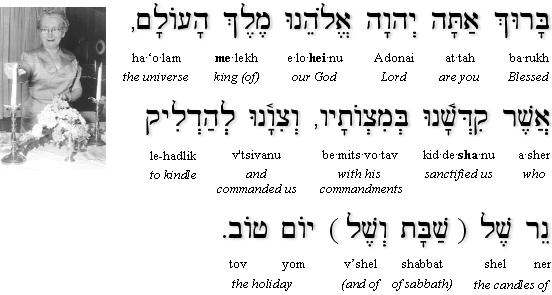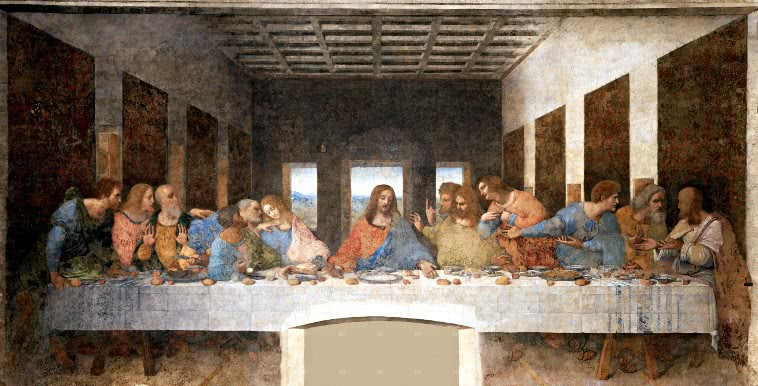Passover was one of the most important holidays of the year
for Eastern European Jews. It commemorates
the liberation of the Jewish people from slavery in Egypt over three thousand
years ago. Today Passover continues commemorate the liberation of the Jews from Egypt, but also celebrates the freedom of all people from oppression.
It is a spring holiday, and is one of the most ancient
religious festivals of the Jewish people.
It takes place during the first month of the Jewish calendar, on the
fifteenth of Nisan and lasts eight days.
Passover, or Pesach, was one of the three harvest festivals, which
included Shavuot ( commemorates God giving the Ten Commandments to Moses) and Sukkot, and required that all adult Israelite men bring offerings to the temple in Jerusalem to thank God for the bounty of
the land.
Passover is described in the Books of Exodus, Leviticus and
Deuteronomy. Originally, it was required that an unblemished
lamb or goat be offered as a sacrifice, and eaten with unleavened bread
(matzo) and bitter herbs (maror) at a special Seder. After the destruction of the Temple in Jerusalem in 70 CE, blood
sacrifices were no longer performed and what was left of the ancient ceremonies
live on in the Passover Seder, and as symbolic foods on the Seder plate.
Getting Ready for Passover
In the countries of Eastern Europe, preparations for
Passover began months before the actually holiday. After the holiday of Purim, serious preparations began. This involved whitewashing the house,
painting the interior rooms, meticulous cleaning of the entire house and all
the utensils used for cooking. If a family was not able to afford the special dishes, cooking utensils and wine cups, which were used only during Passover, they could immerse the dishes,utensils and silverware they had in boiling water, and make them kosher for Passover. I remember my father-in-law telling me about how this was done when he was a child in Chicago,100 years ago. New clothing was purchased for the family, and special foods were prepared. Charity collections were made to
provide Passover foods for the poor. Read more about making the home Kosher for Passover
Matzo
Matzo, "the bread of affliction", and reminds Jews of the servitude they experienced in Egypt. It is unleavened bread, made from flour and water and is one of the most important foods consumed during Passover. It is a reminder of the escape the Jewish people made from Egypt, when there was no time to properly prepare bread. The ingredients are quickly mixed together, so no rising can occur, it is baked quickly, so it can't puff up or rise. The whole process from mixing the ingredients to baking the matzo takes less than 20 minutes.
Matzo was baked during the week before Passover. The matzo that was used for the Seder
meal was made by hand and was rolled out like pie crust. Since Jews were required to eat only matzo for the
entire eight day holiday, the invention in 1838,
of a machine that made matzo was welcomed and its use spread quickly
over Europe. In Eastern
Europe, the matzo making machine was controversial, and Rabbis spent years discussing whether
the machine could be cleaned thoroughly enough to make matzo according to the
requirements for Passover. In the 1850's in Galicia, one Rabbi allowed the use of the machine, and another did not. However, most of the Eastern Jewish communities accepted the use of the matzo making machine.
The final Passover preparation, the search for hametz (crumbs of leavened bread), took place on the evening of the fourteenth of Nisan before the Passover began.
The children and their father carefully searched the house looking for
any crumbs of that might have been missed during the house cleaning. A few crumbs were always hidden, so the
children could find them. When found, they were carefully swept into a small bag, carried
outside the house and burned the next morning, along with any remaining leavened products,
Now the house could be declared hametz free and ready for Passover.
Passover is a holiday celebrated in the home with
family. The ceremonial meal, the
Seder requires that all family members take part, including the children. The table is set using sets of dishes,
glassware and cutlery that are used only for Passover. At sunset, according to Jewish custom, the first day of Passover begins. (the fifteenth day of Nisan begins at sunset.) The
candles were lit and blessed by the mother, and the Seder began.
 |
| Blessing over the Passover candles. Hebrew is read from right to left so the blessing starts in the upper right hand corner. |
Seder means order.
The ceremony is written out in a special book, called a Haggadah, which contains the entire service. The fourteen parts recount the escape of the Jewish people from Egypt,
starting with the blessing and ending with the words “Next year in Jerusalem.”
The father or eldest man in the family conducted the Seder. A plate placed on the table, contained
the symbolic foods, another plate which held three pieces of matzo, under a decorated
cover, and a bottle of red wine, were necessary for the Seder. A
cup of wine was poured for the prophet Elijah, who is considered a protector of
Jews. The youngest child in the family asked the four questions, which began with "Why is this night different from other nights?" As the four questions were answered by family members, the
story of the Exodus from Egypt was told and the contents of the Seder plate are explained.
The seventh day of Passover commemorates the arrival of the Jewish people at the Red Sea and the parting of the waters that allowed them to cross. It was a major holiday with special prayers and a service. A festive meal was served on this day.
Passover and Easter are related. Many Jewish Passover practices took on new meanings in Christianity. Maundy Thursday, the Thursday before Easter has roots in Passover, since the Gospels of Matthew, Mark and Luke, say that Jesus was celebrating a Passover Seder on that night. Many Christian churches conduct a Seder on that day. However, Passover is not the Jewish version of Easter. According to Rabbi Bruce Kadden, in his essay, "A Christian's Guide to Passover", "...for Jews "Passover represents the redemption from slavery and the deliverance to freedom, for Christians, Easter represents the ultimate redemption of humankind through the life and death of Jesus."
There is a darker relationship as well. In Medieval Europe, it was believed that Jews used the blood of Christian children to make the matzo, which resulted in harassment and violence toward Jews. This belief continued long past the middle ages in Eastern Europe and was called "the blood libel". In Russia, pogroms often occurred during Passover.
Passover was celebrated, secretly and often with great difficulty during the Holocaust, and the Warsaw Ghetto upraising in 1943 began on the eve of Passover.
 |
| The Seder Plate, cups of wine and Matzo |
The Seder Plate
- Karpas: A green vegetable, usually parsley. Karpas symbolizes in success of the Israelites during their first years in Egypt. It also symbolizes spring. The karpas is dipped in the salt water so the Seder participants could taste both the hope of new birth and the tears of the Israelite slaves in Egypt. In Eastern Europe, parsley often was not available at Passover, so a potato was used for the karpas.
- Haroset: A mix of fruit--in Eastern Europe apples were used, wine or honey and nuts. Haroset symbolizes the mortar used by the Israelites when they built the pyramids.
- Maror: A bitter herb that represents the bitterness of slavery. Horseradish is used for maror. Maror is dipped into the haroset to represent the bitterness of slavery and the work associated with this bitterness.
- Hazeret: A second bitter herb, usually a bitter lettece. A "sandwich" is made from matzo, maror and hazeret.
- Z'roa: A roasted lamb bone that stands for the lamb that Jews sacrificed at the Passover offering when the Temple stood in Jerusalem. It is a reminder of the sacrifice that the Jews offered just before they left Egypt.
- Beitzah: a roasted egg, which symbolized the sacrifice at the Temple in Jerusalem. It also represents the cycle of life, that even during the worst of times, there is always hope for a new beginning.
- "I will free you form the labors of the Egyptians
- and deliver you from their bondage
- I will redeem you with an outreached arm and through extraordinary chastisements.
- And I will take you to be my people and I will be your God" Exodus 6: 6-7
| Passover table, with the Seder plate, covered matzo plate and wine. |
The Eight Days of Passover
How were the rest of the eight days of Passover spent? The first two days are major holidays, and days of complete rest, and no work was permitted on these days. On the second day of Passover, another Seder was conducted. The last two days were also major holidays, and no work is allowed on these days. The intermediate days are called Chol HaMoed, or the festival of weekdays. It was a time for fun and relaxation, and no heavy work could be done on these days. People would take family outings, bringing picnic meals of foods which were allowed for Passover.The seventh day of Passover commemorates the arrival of the Jewish people at the Red Sea and the parting of the waters that allowed them to cross. It was a major holiday with special prayers and a service. A festive meal was served on this day.
 |
| Although this is a modern poster, it gives the idea of how the days Chol Haoed are to be observed. |
Passover, Christianity and Easter
 |
| DaVinci's Last Supper |
There is a darker relationship as well. In Medieval Europe, it was believed that Jews used the blood of Christian children to make the matzo, which resulted in harassment and violence toward Jews. This belief continued long past the middle ages in Eastern Europe and was called "the blood libel". In Russia, pogroms often occurred during Passover.
Passover was celebrated, secretly and often with great difficulty during the Holocaust, and the Warsaw Ghetto upraising in 1943 began on the eve of Passover.



Thanks for the interesting history! I enjoyed comparing the traditions to our modern observance. Chag Sameach!
ReplyDelete